It is unbelievable how good newsletter subscribers convert in an online shop when coming from a newsletter campaign. They keep those subscribers up to date on the latest offers and products, thus making them highly engaged with the brand.
No wonder it has become a common best practice to convince users of submitting their email address as a first touchpoint.
There would be no point in asking for the email address again. Instead the user’s focus should be led to other items on your website. In order to do so either the sign-up section could be removed or the space of that section could be replaced with other elements, which could be more valuable for users as well as for those running the website.
For this purpose, we have to keep track of who entered the website via newsletters. When a user clicks a button or an image within the email which links to the website, Google Analytics can track the corresponding source. To avoid (not set) in Google Analytics, we have to tell the system that the user is coming from a newsletter. Due to analytical reasons, we’re using UTM parameters.
UTM parameters allow campaign-specific tracking which helps measuring marketing campaigns and getting insights for conversion rate optimization. You cannot only check how many users entered a specific page but also which image or button made the deal to be clicked.
Example: https://jonas-bayer.com/?utm_source=newsletter&utm_medium=email&utm_campaign=blogpost-hide-newsletter
The table below delivers an example on how to appropriately put UTM parameters to use.
| utm_source | Source where the user is coming from. E.g., search engine, social media, newsletter |
| utm_medium | Ad and marketing medium. E.g. CPC, organic, email |
| utm_campaign | Specific campaign name to analyze the performance |
| utm_content | Set parameters to keep track of which element in the newsletter was clicked, e.g. when a button and an image in the newsletter link to the same page |
| utm_term | track paid ad campaigns (not necessary for now) |
In our case, besides Google Analytics, the website itself needs to know where the user came from as well. If the user entered the website via newsletter, this should be remembered for the future.
Since working on the website code tends to be a little tricky, we are using Google Tag Manager for that.

First of all, create a Custom HTML Tag in Google Tag Manager. The JavaScript code within the script-Tag searches the URL for the UTM parameters. In our case, we are looking for utm_source=newsletter and utm_medium=email. If the URL contains a value for either one or both of them, the code saves the value to sourceValueFound and mediumValueFound.
var url = window.location.href;
var keyToFindSource = 'utm_source';
var keyToFindMedium = 'utm_medium';
if (url.indexOf(keyToFindSource + '=') > -1) {
var sourceValueFound = url.substr(url.indexOf(keyToFindSource + '=') + keyToFindSource.length + 1).split('&')[0];
}
if (url.indexOf(keyToFindMedium + '=') > -1) {
var mediumValueFound = url.substr(url.indexOf(keyToFindMedium + '=') + keyToFindMedium.length + 1).split('&')[0];
}
if (sourceValueFound == "newsletter" && mediumValueFound == "email") {
localStorage.setItem("newsletter", true);
}
If utm_source=newsletter and medium=email are set, the tag adds the key-value pair newsletter: true to the LocalStorage. The LocalStorage is persistent (similar to cookies); this means the information that the user came via newsletter to the website will still exist in further sessions in a few days or even weeks.


We don’t know via which links users will come from and which pages are linked from newsletters in the future. Therefore, we set the trigger for the custom HTML tag to All Pages.
Besides A/B tests, Google Optimize provides the option of showing personalized website variants for different target groups permanently. Depending on the users interest or behavior, the website can be displayed slightly different. The variants tends to fit better for the individual user and they might interact better with the website.
Create a new Personalization in Google Optimize
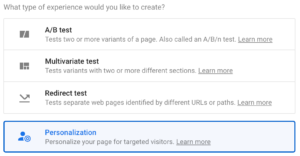
Click on Make Site Changes and create a new variant. Search for the section you would like to hide or replace.
In the shown case, the newsletter section is called #section-108-109. In this section, we don’t want to add any other items or content, but replace it for design reasons with an orange line, which will divide the content above from the footer.
Before:
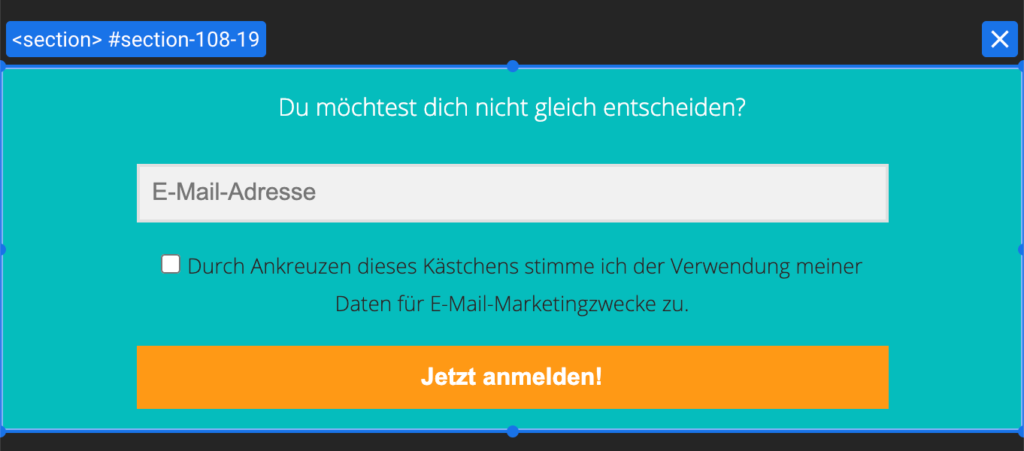
After:

Select #section-108-109 and click edit element in the bottom right corner.

Replace the existing code with the new one or just delete it.

It is important to apply this change to any other page that contains the same newsletter section. That’s why we have to change URL matches to URL starts with the URL of our website.

In the audience targeting section, we have to select only users who have newsletter: true set in the LocalStorage. To get the value from the LocalStorage, we select Custom JavaScript under rule type. This snippet gets the value from the LocalStorage.
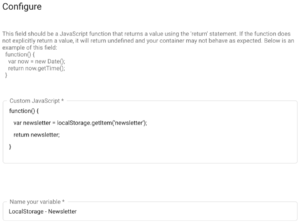
function() {
var newsletter = localStorage.getItem('newsletter');
return newsletter;
}
If this value equals true (remember we have set this value to the LocalStorage before), the new variant we have created previously should be displayed for website users.

Before going live, we have to check if everything works fine. Turn on the debug mode under Site Changes > Preview.
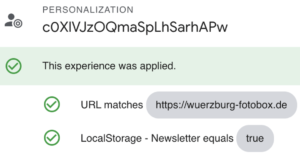
Voilà, everything seems to be fine!
It could be possible that users interact better with the personalized variant, or maybe the control variant works better for them, but as long as we don’t check it, we don’t get any insights which variant of the website performs better. But digital analysts and online marketers really rely on this information!
Go to your Google Analytics account to create a segment to compare the performance of both variants.
Get the Experiment ID from Google Optimize and paste it in Google Analytics.
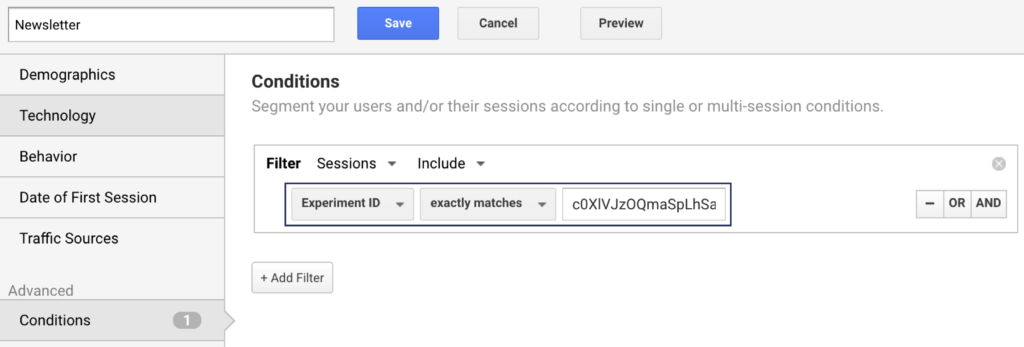
If this doesn’t work for whatever reason, there’s a second way to reach the goal: Set Event Category to Google Optimize and use the experiment ID as Event Action.
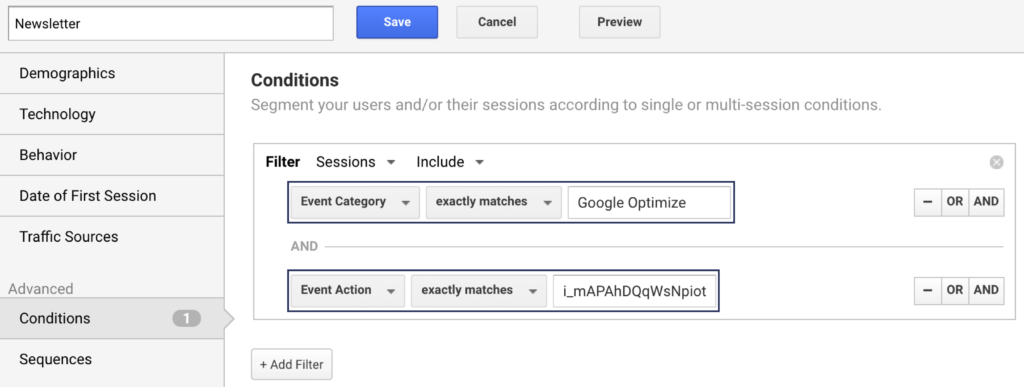

Now we are ready to compare the variants and check if users who have entered the site via a newsletter campaign really have higher engagement and higher conversion rates!